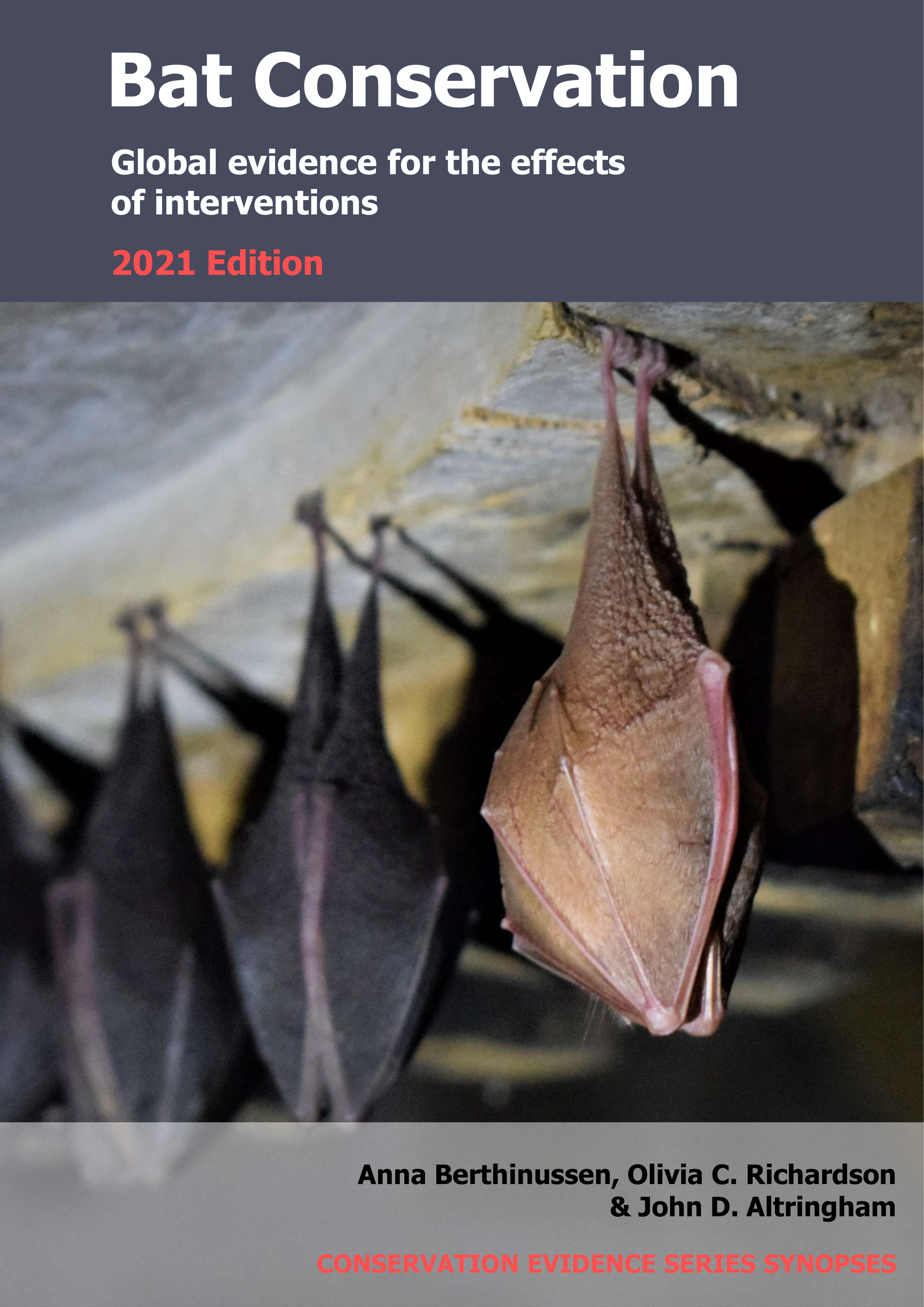Install green bridges as road/railway crossing structures for bats
-
Overall effectiveness category Unknown effectiveness (limited evidence)
-
Number of studies: 1
View assessment score
Hide assessment score
How is the evidence assessed?
-
Effectiveness
70% -
Certainty
27% -
Harms
0%
Study locations
Supporting evidence from individual studies
A study in 2014 at one green bridge over a road in the UK (Berthinussen & Altringham 2015) found that the green bridge was used by 97% of bats that crossed the road. A greater number of bats crossed the road using the green bridge (97%, 121 of 125 bats) than crossed the road below at traffic height (2.4%, 3 of 125 bats) or above traffic height (0.8%, 1 of 125 bats). Four bat species were recorded using the green bridge for crossing and foraging: common pipistrelle Pipistrellus pipistrellus (92 bats), soprano pipistrelle Pipistrellus pygmaeus (22 bats), Natterer’s bats Myotis nattereri (2 bats), and a whiskered or Brandt’s bat Myotis mystacinus or Myotis brandtii (1 bat). Four bats using the green bridge could not be identified to species. One common pipistrelle and two unidentified bats were recorded crossing the road below the green bridge at traffic height. One common pipistrelle crossed the road below above traffic height. The green bridge was built over a four-lane road in 2005 to maintain access to a historic property and provide a wildlife crossing. The bridge (50 m long x 30 m wide x 6–8 m high) had a paved road over it with grass verges, shrubs, and trees (2–3 m high) on each side. Observations of crossing bats and recordings of bat calls were made during 10 x 60-minute surveys at dusk or dawn in June–August 2014.
Study and other actions tested
Where has this evidence come from?
List of journals searched by synopsis
All the journals searched for all synopses
This Action forms part of the Action Synopsis:
Bat Conservation
Bat Conservation - Published 2021
Update 2020





)_2023.JPG)














